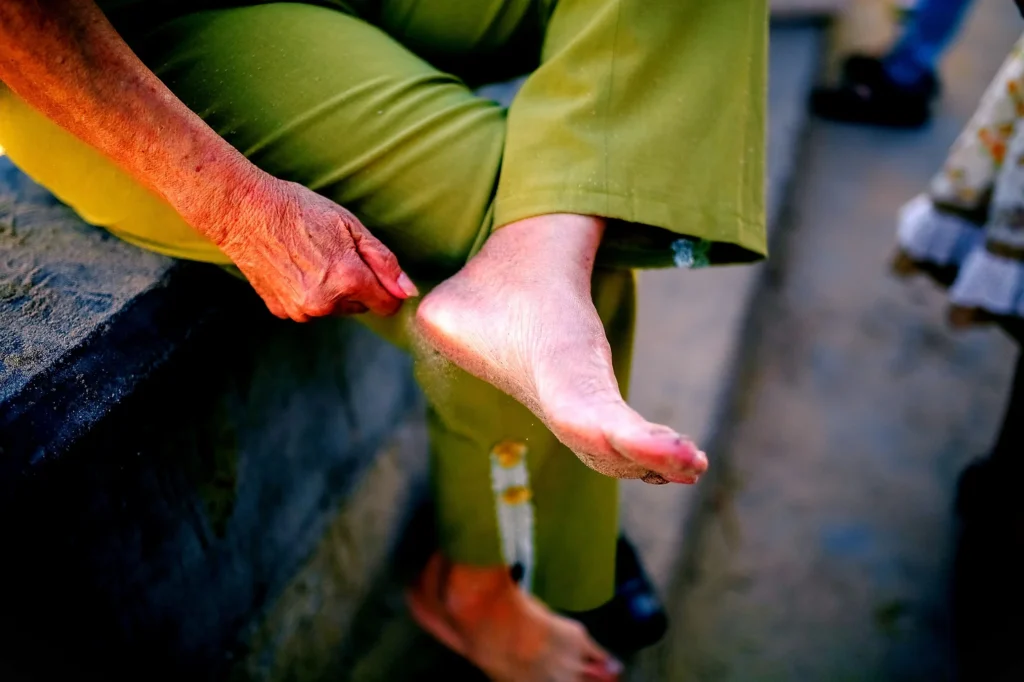What is ‘Foot Drop’?
‘Foot drop’ or ‘Drop Foot’ is a general term used to describe difficulty lifting the front part of the foot.
It is a term used to describe a sign of an underlying neurological, muscular or anatomical problem.
If you have a foot drop you might notice:
- the front of your foot dragging or catching on the floor when you walk
- a ‘high stepping gait’ whereby you raise your thigh to help you clear your foot from the floor
- Your foot slapping on the floor due to the unusual walking pattern.
Foot drop can be temporary or permanent. Depending on the cause it can affect one or both feet. The video below shows an example how foot drop effects a persons walking pattern.
What causes Foot drop?
Foot drop is caused by weakness or paralysis of the muscles involved in lifting the front part of the foot to flex the ankle seen in the picture.

Nerve Injury
The most common cause of foot drop is compression of a nerve in your leg that controls the muscles involved in lifting the foot. This nerve can also be injured during hip or knee surgery. People who have diabetes may be more susceptible to peripheral nerve disorders which could also cause foot drop.
Nerve root injury
This can also be described as a ‘pinched nerve’ in the spine.
Muscle or nerve disorders
Various forms of muscular dystrophy can cause progressive muscle weakness. So can other disorders such as polio or Charcot-Marie-Tooth disease.
Brain and spinal cord injury
Foot drop is a common presentation seen in conditions including stroke, multiple sclerosis, amyotrophic lateral sclerosis (ALS), cerebral palsy, spinal injury
Treatment for Foot Drop
FES – Functional Electrical Stimulation.
This uses electrical currents to stimulate the nerves and activate weak muscles which lift the foot at the ankle in time with your walking.
Not only does FES reduce the risk of trips and falls, it can also make walking faster and less effortful. Over time, the muscles can even relearn how to lift the foot without the stimulator.
The National Institute for Clinical Excellence (NICE) has declared FES as a safe and effective treatment for foot drop. The use of FES may assist in day-to-day activities which may otherwise not be possible.
Splints (ankle foot orthoses)
A brace on your ankle and foot, or a splint that fits into your shoe can help hold the foot in a natural position while you stand and walk.
Physiotherapy
Using a combination of exercise, balance retraining, assistive technology and hands on treatment, your physiotherapist will be able to optimise your range of movement, facilitate normal movement patterns and retrain balance reactions to develop your walking pattern and problems associated with foot drop.
Hopeful outcome following therapy
With a combination of these therapeutic approaches, the problems associated with drop foot can be minimised, and potentially improve over time. Joint movement, muscle strength, balance, and efficiency of walking can improve. In some cases people can return to higher level activity such as long distance walking, running and jumping.
If therapy is avoided with the presentation of Foot Drop the outcome is very limited and the condition potentially may not improve, leading to longer term problems with walking and balance.

